Older Interzoid Blog Entry Directory
Company Name Match Similarity Scoring
Compare two company/organization names programmatically to see how similar they are.
Read More →Databricks Interzoid Data Matching Tutorial
Run match reports on and across Databricks data tables and datasets using the free Databricks Community Edition.
Read More →Databricks Connectivity Now Available
Run matching/duplicate data reports, identify inconsistent data, enrich data, and more within Databricks clusters and SQL warehouses.
Read More →
Data-Centric AI vs Model-Centric AI
While both training data and models are essential to successful AI, the paradigm emphasis is shifting.
Read More →
What is Data Observability?
Ensure the overall health, accuracy, reliability, and quality of your data assets.
Read More →

Three Ways to Utilize Interzoid for Better Data Usability and Value
APIs, interactive dataset processing, and connecting to Cloud databases for analysis are all available with Interzoid.
Read More →
Quick and Easy Data Matching with Snowflake: Three Ways
Quickly and easily match data, identify inconsistency, and eliminate redundancy on Snowflake's Cloud Data Platform.
Read More →
Redirected Output of Data Analysis Processes for Data Workflow
This capability enables scheduled/ongoing processing, automated workflow, and data pipelines.
Read More →
"Elementizing" a Dataset or Database Table Column
A data element analysis of data columns can help towards improving data consistency.
Read More →
Step-by-Step Data Matching in the Cloud Tutorial
Quick walkthrough shows how easy identifying redundant data in the Cloud can be.
Read More →
Python Package Added for Name Match Scoring
Enables fast and simple name scoring in Python.
Read More →
Go Package Added for Name Match Scoring
This makes using in Golang incredibly fast and simple.
Read More →
Many Solutions Begin with Matching Data
The complexities involved in matching individual or company/organization names can be considerably reduced.
Read More →
Is Your Business Intelligence Data Suspect?
How useful are business intelligence applications if the underlying data is suspect?
Read More →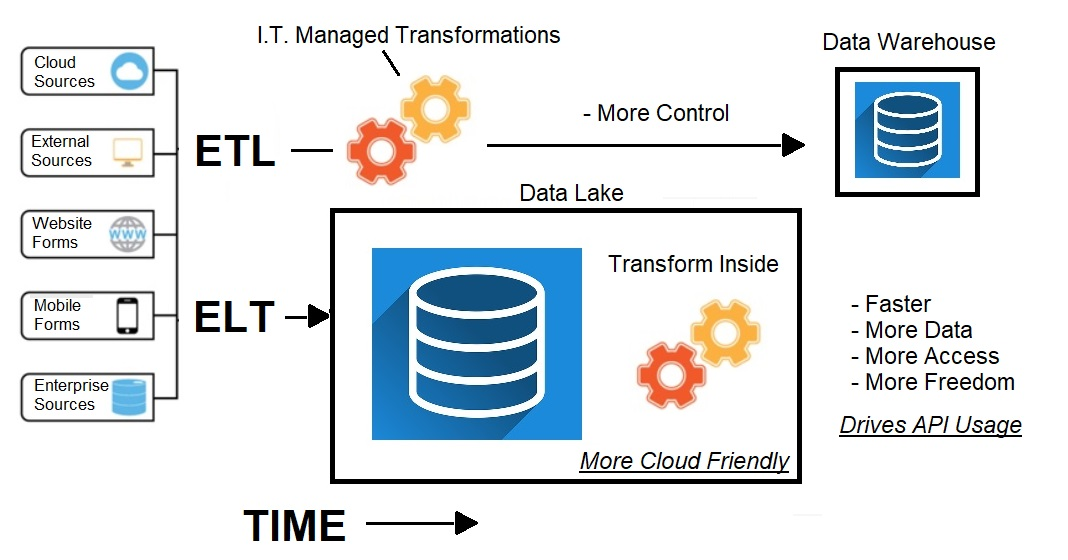
ELT Versus ETL in the Era of Cloud Databases
ELT is emerging as a preferred approach in the era of Cloud Databases versus traditional ETL. Here's why.
Read More →
Applied Machine Learning Can Be a Powerful Data Engineering Ally
Using Machine Learning capabilities, an organization can significantly improve the quality, usability, and value of their important data assets.
Read More →
Normalize Your Data : Send it to Us
Standardized, consistent data assets provide better analytics and data-driven results.
Read More →
Cloud Data Workloads Now Support CSV Files
Any CSV file on the Web can be used as a data source.
Read More →
Identify Duplicate, Redundant, and Inconsistent Data in Cloud Data Sources
Connect to various database platforms to quickly and easily run actionable match reports.
Read More →
Amazon AWS Choices for Cloud Relational Databases
An overview of Cloud Relational Database Management offerings from AWS Amazon, and how Interzoid can help with improving the important data in each.
Read More →
Automated Data Quality Reporting and Capabilities for the Azure SQL Database Platform
Leverage matching, standardization of inconsistent data, validation, appending and other features to improve the value of your strategic data assets within Microsoft's Azure SQL Database Platform - all from the browser.
Read More →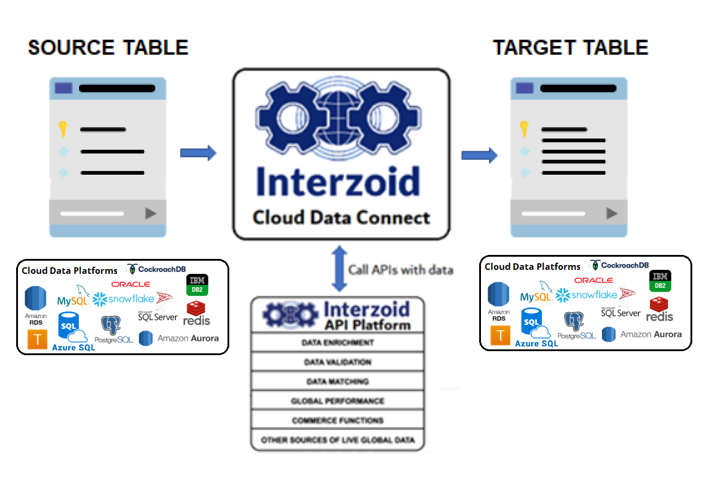
Data Engineering Use Cases with Interzoid Cloud Data Connect
Sample Use Cases for Interzoid's Cloud Data Connect offering, for Data Engineering in the Cloud with the top Cloud Data Platforms.
Read More →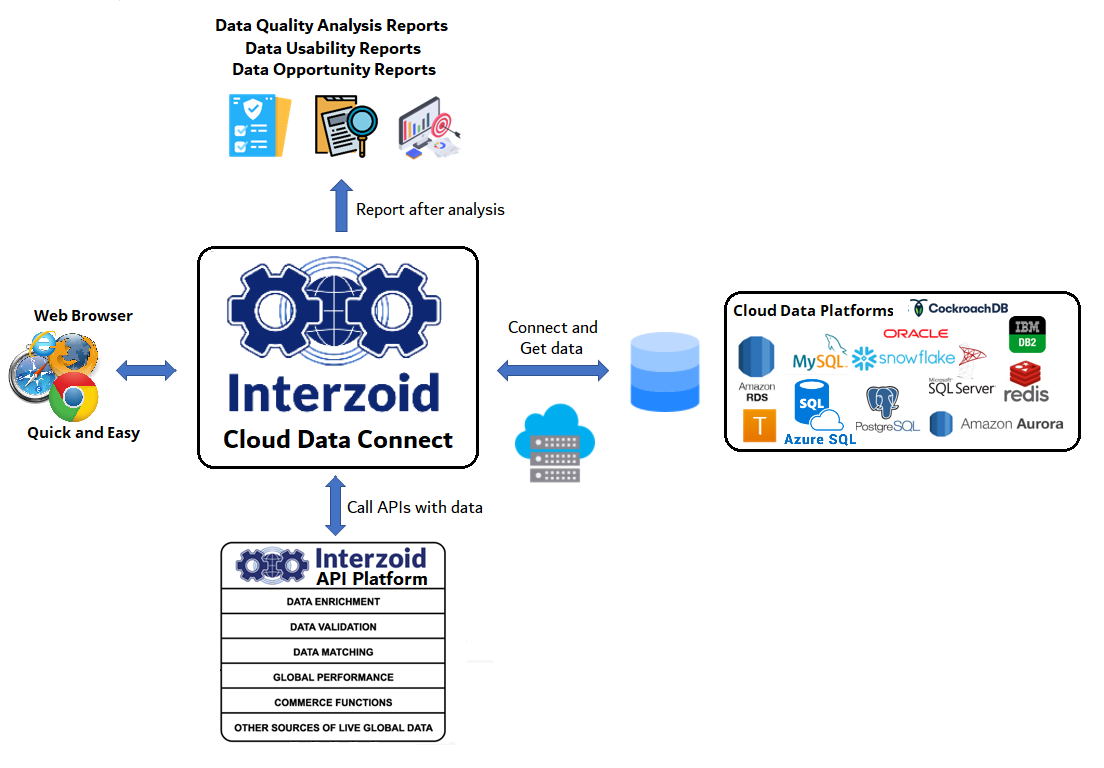
Run Live Data Quality Match Reports from our Web Application
100% Cloud, browser-based application easily connects to and quickly generates live duplication/redundancy reports from data within major Cloud database platforms such as Snowflake, AWS RDS, and Google Cloud SQL.
Read More →
Send us Your Data: Data Cleansing Services Available
We will use our proprietary cleansing, matching, and enrichment tools to increase the usability and value of your data assets.
Read More →
Easy API Integration Examples in Ten Programming Languages
Example Interzoid API integration code is provided in Javascript, Typescript, Node, Python, Go, Java, Ruby, Rust, C#, and PHP repositories.
Read More →
Unlimited Enterprise Subscription Now Available
Full, complete access now available and includes Premium Support. Take advantage of special launch pricing through October.
Read More →
Code Example: Using HttpClient in Java to Invoke Interzoid APIs
Sample Java code demonstrates how straight-forward it is.
Read More →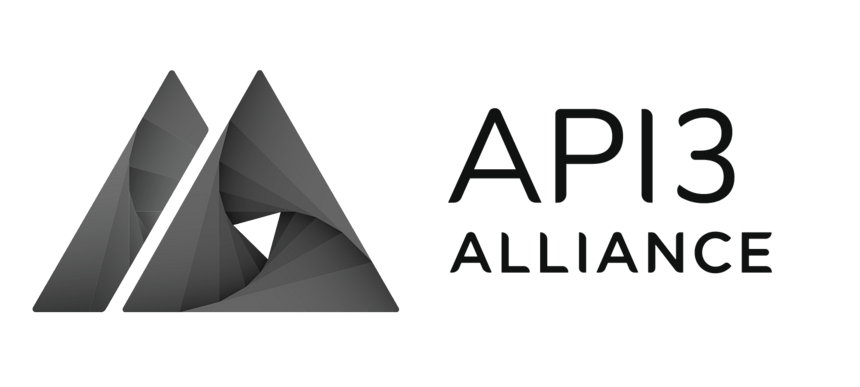
Interzoid Joins API3 Alliance as Founding Member
Interzoid's API will be accessible for use on the blockchain
Read More →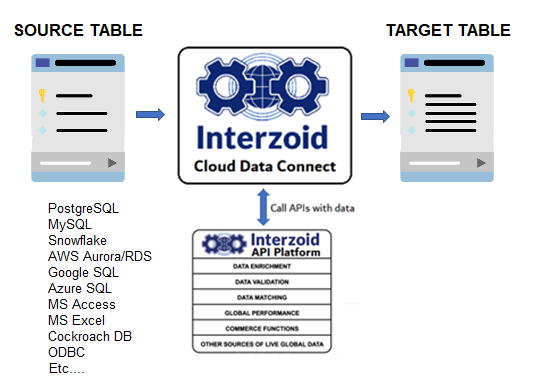
Interzoid Cloud Data Connect - Automating the Use of Cloud Database Tables as Input to APIs - No coding!
The free download bridges the gap between Cloud database platforms and APIs.
Read More →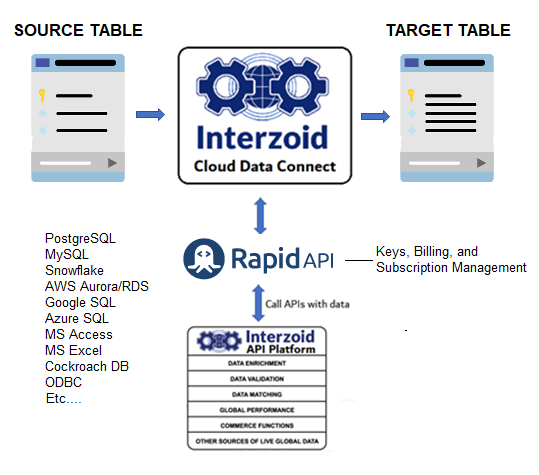
Using Interzoid Cloud Data Connect with RapidAPI to Find Matching Company Names in Cloud Databases - No Coding
Use your RapidAPI Marketplace subscription directly within Interzoid Cloud Data Connect for automated company name matching within major Cloud database platforms.
Read More →
Video: Validating and Enriching Email Addresses Within PostgreSQL via API
Step-by-step walkthrough shows validating and enriching email addresses directly in PostgreSQL, adding geographics and email address type indicators.
Read More →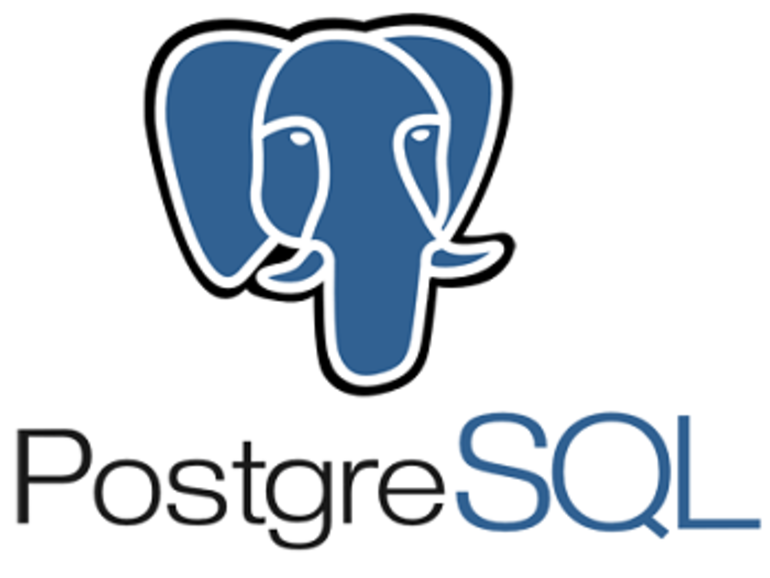
Video: Enriching International Telephone Numbers Within PostgreSQL via API
Step-by-step walkthrough shows enriching global telephone numbers directly in PostgreSQL, adding geographics and demographics.
Read More →
Video: Data Engineering with PostgreSQL - Matching Inconsistent Company Name Data.
Step-by-step walkthrough shows populating a database in PostgreSQL, and then performing various matching and appending techniques to resolve the issue of inconsistent organization/company name data.
Read More →
Video: Data Engineering with the Snowflake Data Cloud - Matching Inconsistent Company Name Data.
Step-by-step walkthrough shows populating a database on the Snowflake Data Cloud, and then performing various matching and appending techniques to resolve the issue of inconsistent organization/company name data.
Read More →
Video: Creating a Database on Amazon Aurora, then Matching Data and Appending Similarity Keys - All Automated, No Coding.
Step-by-step walkthrough shows creating a database on Amazon's Aurora Serverless Database platform, and then performing various matching and appending techniques on the created data tables in a few simple steps.
Read More →
Launch a CockroachCloud Instance, Populate with Data, and Perform Data Quality Analysis
Identifying inconsistent, redundant, and duplicate organization/company names with a CockroachCloud instance in only four steps.
Read More →
Generating Company Match Reports in the Snowflake Data Cloud
Identifying inconsistent, redundant, and duplicate organization/company names within Snowflake in only four steps.
Read More →
Advanced Company Name Matching Now Available on AWS Marketplace
Sophisticated matching capabilities via API, database connectivity, and application connections.
Read More →

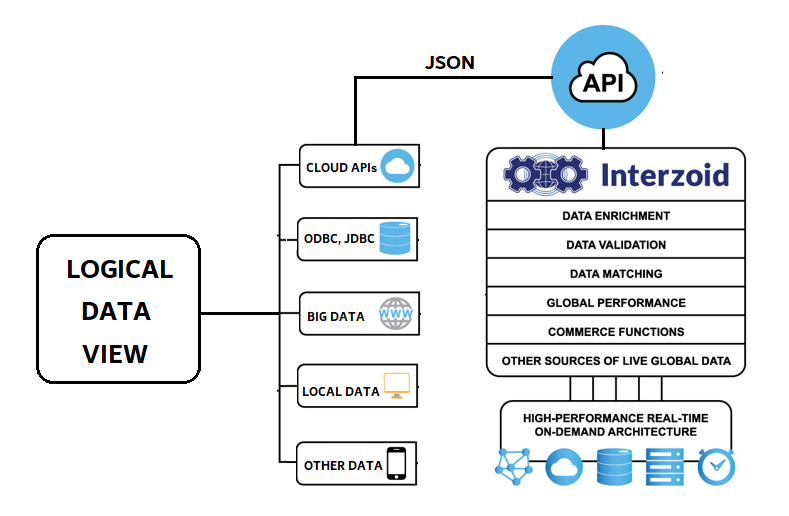
Part Two: Data Virtualization, Interzoid’s Global Telephone Information API, and Denodo: Appending External Data to a Data Source via API, Step-by-Step
Part Two of a two-part series on data virtualization and APIs
Read More →
Part One: Data Virtualization, Interzoid’s Company Data Matching API, and Denodo: Find Redundant Company Names Within a Data Source, Step-by-Step
Part One of a two-part series on data virtualization and APIs
Read More →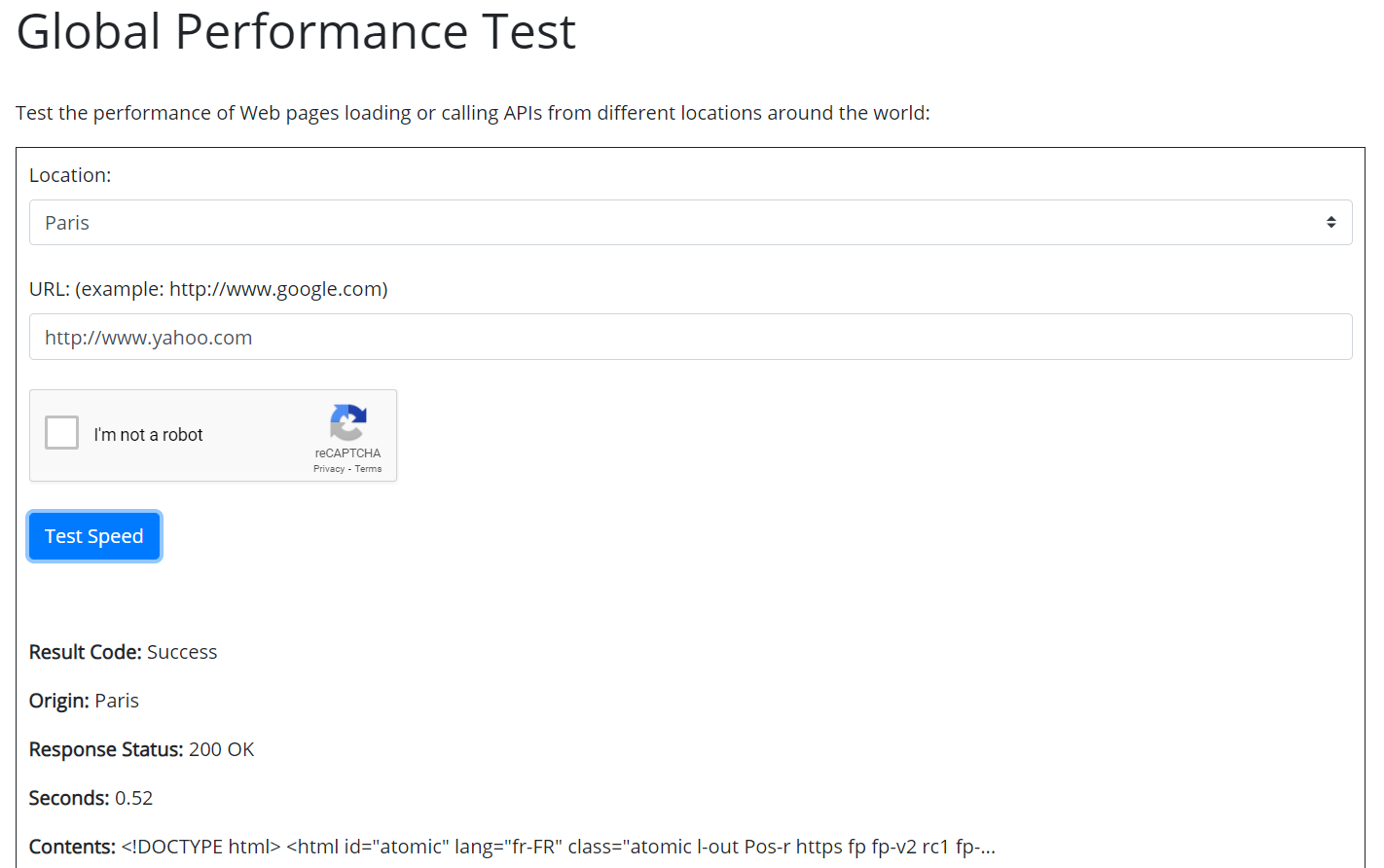
Global Speed Test for Websites and APIs
Measure performance from international locations.
Read More →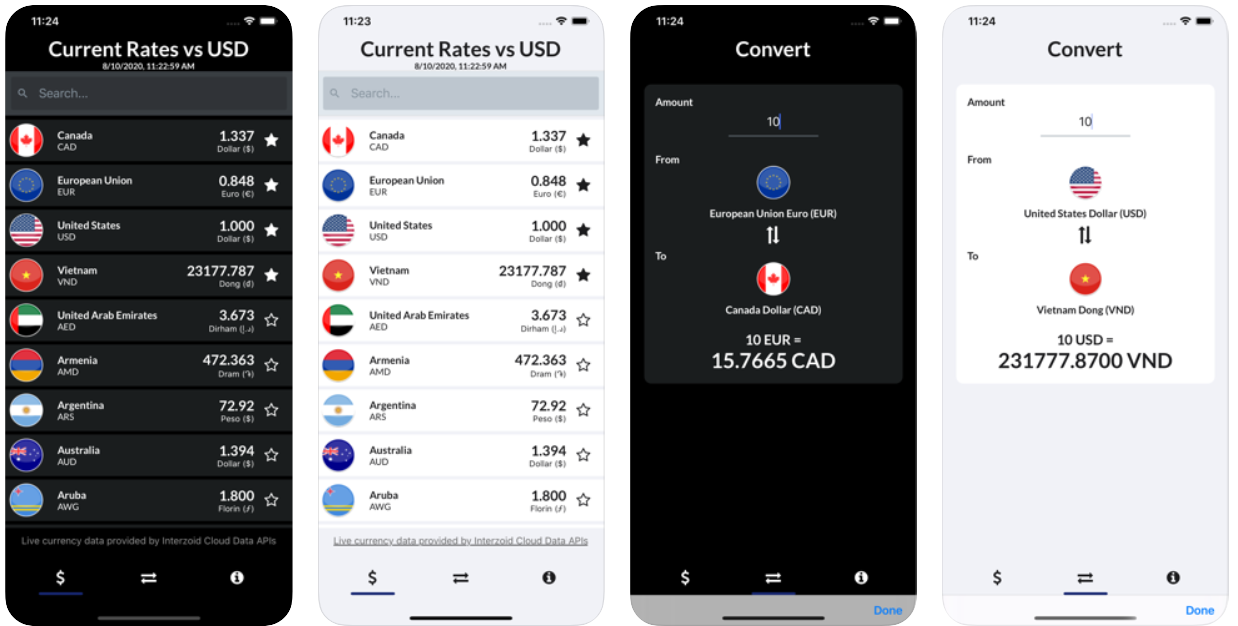
Real-time Currency Converter: Sample API Client Mobile Application
Mobile applications are a great way to leverage data feeds via API.
Read More →
Using Multiple Algorithms to Improve Organization Name Matching
Fine-tune the identification of duplicate, inconsistent organization names within or across datasets.
Read More →
Identifying a City from an International Telephone Number via API
Automate collection of city, region, and country data for collected international phone numbers.
Read More →
API to Generate Person Data for Testing
Leverage high volumes of fictional data to test performance of database applications.
Read More →
Measuring Performance Gains from Cloudfront - Testing from the Edge
AWS Cloudfront is one Edge Computing solution delivering significant performance gains through global caching networks. But how does one measure results?
Read More →
Press Release: Interzoid Launches Cloud Data All API Access, Now Available in AWS Marketplace
Enables easy access to multiple Cloud capabilities and data sources via unified billing
Read More →
Use Latitude and Longitude in Mobile Devices to Get Current Weather Conditions
Now it's easy to add weather to mobile applications using geolocation data from a mobile device.
Read More →
Integrate Current Weather Data via API
Weather data can add weather-based customization and personalization to a broad class of applications.
Read More →
Interzoid All-Access API Package Integrated and Available for Subscription via the AWS Marketplace
Interzoid's collection of APIs are now integrated into the AWS Marketplace and available for use as part of solutions utilizing Amazon's Cloud infrastructure, including unified billing.
Read More →
Matching and Merging Data: Similarity Keys
Much value can be obtained from merging multiple files of data to get clearer, more comprehensive pictures of prospects, customers, and business opportunities. However, matching data across tables or merging files can be a challenge if the data in those files is inconsistently represented.
Read More →
OpenAPI Specification 3.0.3 Released
The OpenAPI 3.0.3 specification was released late last week.
Read More →
Global Commerce: Show Prices in Local Currencies via API - Earn Possible 30% Purchase Increase
There were approximately 4.5 billion active Internet users around the globe in January 2020. Europe had more individual users on the Web than North America, with over 750,000 million. Asia eclipsed that with nearly 2 billion online. Is your site ready?
Read More →
Interzoid Joins the OpenAPI Initiative to Help Build Frictionless Data Future
OpenAPI welcomes Interzoid as a new OpenAPI member!
Read More →
Examples of Individual Name Matches Likely Within Your Data
Duplicate customer data involving individuals is usually caused by spelling variations, nicknames, data inconsistency, typos, and free-form data sources, causing the same individual to make multiple appearances at different places within corporate data assets.
Read More →
Examples of Catching Duplicate, Inconsistent Company Name Data with an API
No company has been built on a foundation of bad data assets. Here are some examples of inconsistent company data within databases and an API that can help.
Read More →
Micromarkets: Enhance Marketing Campaigns Using Enriched Zip Code Data
Zip codes carve up the United States into more than 41,000 micromarkets. Using them for customer analytics and marketing segmentation can provide interesting insights, including identifying important markets, top buyer demographics, and optimizing the selection of growth markets
Read More →
Determine the Likely Spoken Language of a Customer or Prospect from an International Phone Number
If you are doing any kind of international marketing or customer communication, language diversity is something to consider. Fortunately, Interzoid has an API for that.
Read More →
Ranked: Measuring Global Performance of Top International News Sites with an API Call
Large news sites typically have global audiences, therefore, it's a good exercise to measure how Websites and specific Web pages perform from international locations. Accordingly, we thought we would test how several top global news organizations are performing with respect to page load time.
Read More →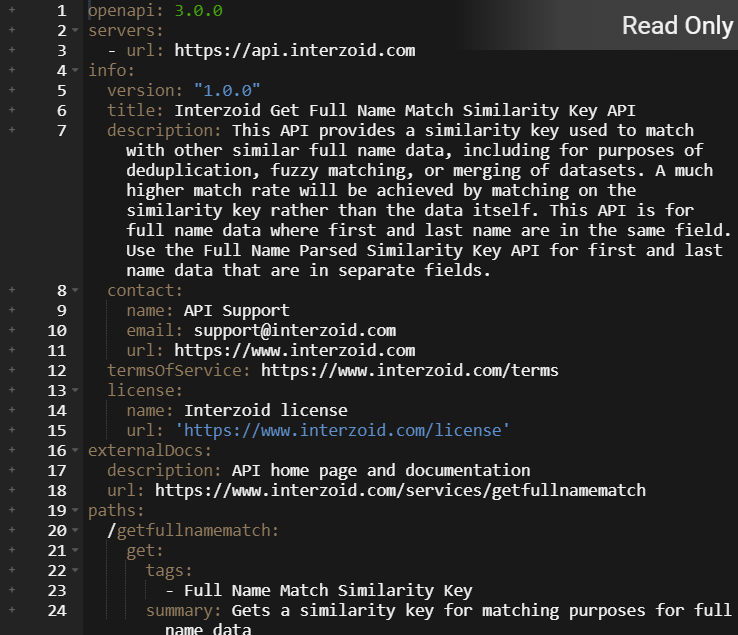
OpenAPI Specification 3.0 Documentation for Interzoid APIs Now Available on SwaggerHub
Interzoid now has documentation for 20+ APIs available on SmartBear's SwaggerHub platform in the OpenAPI 3.0 Specification format.
Read More →
More Accurate Queries and Analytics: Easily Standardize Inconsistent Data via API
Data is inherently inconsistent, at least with respect to how it is stored electronically. These inconsistencies can make data very difficult to analyze. What can be done?
Read More →
How do you Enforce a Global Service-Level Agreement?
Service-level agreements can be quite complex. However, many involve straight-forward performance metric requirements that are agreed to by a customer and its service provider. But how do you enforce them on a global level?
Read More →
API World 2019 Event and Conference
The annual API World event and conference is occurring this week in San Jose, California in conjunction with the Microservices World event. It runs Tuesday through Thursday, October 8th-10th. Sixty exhibitors and over 3500 attendees are expected. Interzoid will be exhibiting.
Read More →
Understanding the Relationship Between APIs and Microservices
Remote Procedures Calls (RPCs), Functions-as-a-Service, Web Services, Service-Oriented Architecture (SOA), APIs, and now Microservices are examples of tangential terms that have been part of our Web vernacular over the years. How do APIs and Microservices compare?
Read More →
How to Match Individual Name Data in Real-time using an API
Name data can exist in many forms at the content level, making hard to match and analyze. This can substantially reduce the value and effectiveness of many data-oriented applications such as customer information systems, marketing systems, resource planning systems, accounting systems, and other business process-driven systems.
Read More →
Estimate Demographics from an International Telephone Number
An international number by itself can provide a significant amount of useful information about the person or organization that the number connects to. This may be helpful as part of a marketing segmentation exercise.
Read More →
Publish Your Data as a Public API to Drive Business?
Publishing data externally as a public API (Application Programming Interface) can pave the way to innovation with your partners and customers, leading to more business opportunities and business development.
Read More →
APIs: An Ideal Mechanism for Better Customer Data Assets at Less Cost
In the case of keeping customer data assets accurate, complete, and valuable, an API approach and all the associated benefits of API-use proves they are an ideal weapon in the solution.
Read More →
Invoking APIs from the Command Line using cURL
cUrl, which stands for "client URL", is a command-line utility for sending and receiving data, making it ideal to consume APIs from the command line without writing code. Here are several examples.
Read More →
Source Code Example: Using Twilio and Interzoid APIs Together for a Web Page (or other API) Global Monitoring and Alerting System
In this example, we will call Interzoid's Global Page Load API to measure performance from thirteen different physical locations around the globe. Then, when a certain measurement threshold is exceeded, we will use the Twilio SMS API to send an SMS alert notifying ourselves of the event.
Read More →
Consuming APIs in Python
Python, a powerful, highly extensive language is one of the fastest growing languages in use today. Many data science and machine language applications are harnessing its capabilities. Here is an example of how to consume an API within Python.
Read More →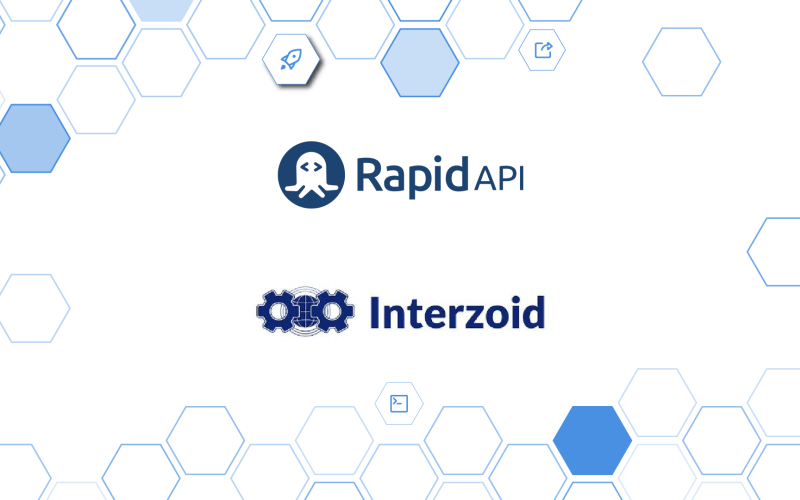
Integrating Interzoid APIs Through RapidAPI
If you already have a RapidAPI account and want to start an integration immediately, or you would like to join millions of developers who utilize RapidAPI's rich set of API tools, Interzoid APIs are now available for use through the RapidAPI platform.
Read More →
Consuming an API in Go
Go, also known as Golang, is a powerful, emerging language architected for distributed computing, especially for server-side scenarios in the Cloud. Here is a quick,easy code walkthrough for using Go to consume an API.
Read More →
Improve Delivery and Sender Reputation with Email List Validation and Enhancement
Email is still one of the top performing tools for marketers in 2019 and beyond. Not only is it budget-friendly and quick to launch campaigns with, but its reach is staggering. It is estimated that there are more than 250-300 billion emails sent around the world every day. Four billion email accounts exist globally, 25% of which are business or otherwise work-related accounts.
Read More →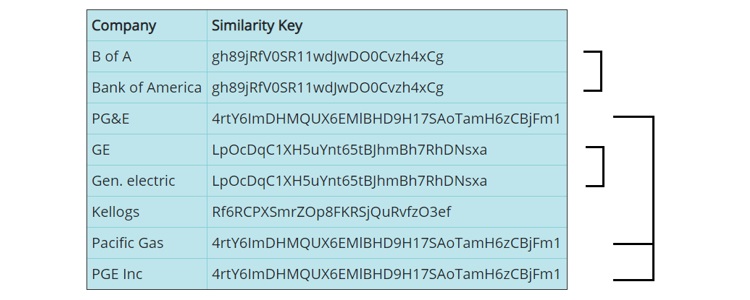
Inconsistent Company Names?
Company names can be inconsistently represented in a database, the permutations causing all kinds of reporting, searching, and matching problems. How can Interzoid's Similarity Keys via API help solve the problem?
Read More →
Measure Web Page Load Speed From Points Around the Globe with an API Call
Are you comfortable that your Web site page loading performance is as good globally as it is locally? Now you can easily measure it.
Read More →AI Interactive Data Client: Request and Receive Structured Data of Any Kind on Any Subject.
More...
Github Code Examples
More...
Generate your own Datasets: Retrieve Customized, Real-World Data on Demand as Defined by You
More...
High-Performance Batch Processing: Call our APIs with Text Files as Input.
More...
Try our Pay-as-you-Go Option
More...
Available in the AWS Marketplace.
More...
Free Trial Usage Credits
Check out our full list of AI-powered APIs
More...
Documentation and Overview
More...
Product Newsletter
More...